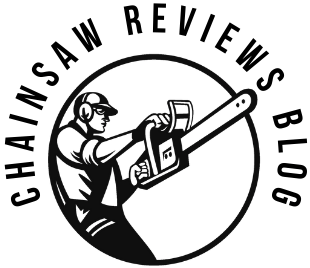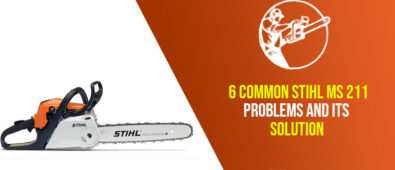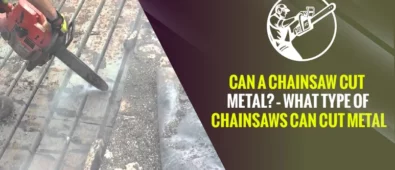In the era of challenging tools, few stand as mighty as the chainsaw – a symbol of raw power and untamed force. From felling trees to shaping the landscape, these mechanical marvels have reshaped our world with remarkable efficiency. However, beneath their impressive utility lies a harsh truth – chainsaws can be dangerous, causing a significant number of accidents each year.
Before we delve into the depths of this enigma, let’s take a moment to glimpse at the stark realities. According to recent data, chainsaws are responsible for thousands of injuries annually, making them a leading cause of accidents. Beyond the cold statistics, it is essential to grasp the potential reasons that make chainsaws scary tools in unskilled hands.
The infamous “kickback,” a sudden and violent reaction that propels the chainsaw upward and backward, is one of the most common reasons for accidents. Additionally, user error, mechanical failures, fatigue, and distractions all contribute to the hazards of chainsaw operation, leaving users vulnerable to unforeseen mishaps.
As we uncover the realities of chainsaw dangers, the need for comprehensive safety measures becomes crystal clear. Equipping oneself with the right knowledge, training, and personal protective equipment (PPE) can make a world of difference in mitigating the risks. Proper training courses provide essential skills and safety protocols, while sturdy helmets, gloves, chaps, and boots shield users from potential harm.
Potential Causes of Chainsaw Accidents
The Potential and major causes of chainsaw accidents are as follows:
Kickback
Kickback refers to a dangerous situation that can occur when using a chainsaw. It happens when the moving chain at the tip of the guide bar makes unexpected contact with an object or when the cutting surface gets stuck or binds in the wood being cut. The sudden reaction causes the chainsaw to kick upward and backward, potentially leading to serious injuries or accidents. Kickback is one of the most common and hazardous occurrences when operating a chainsaw.
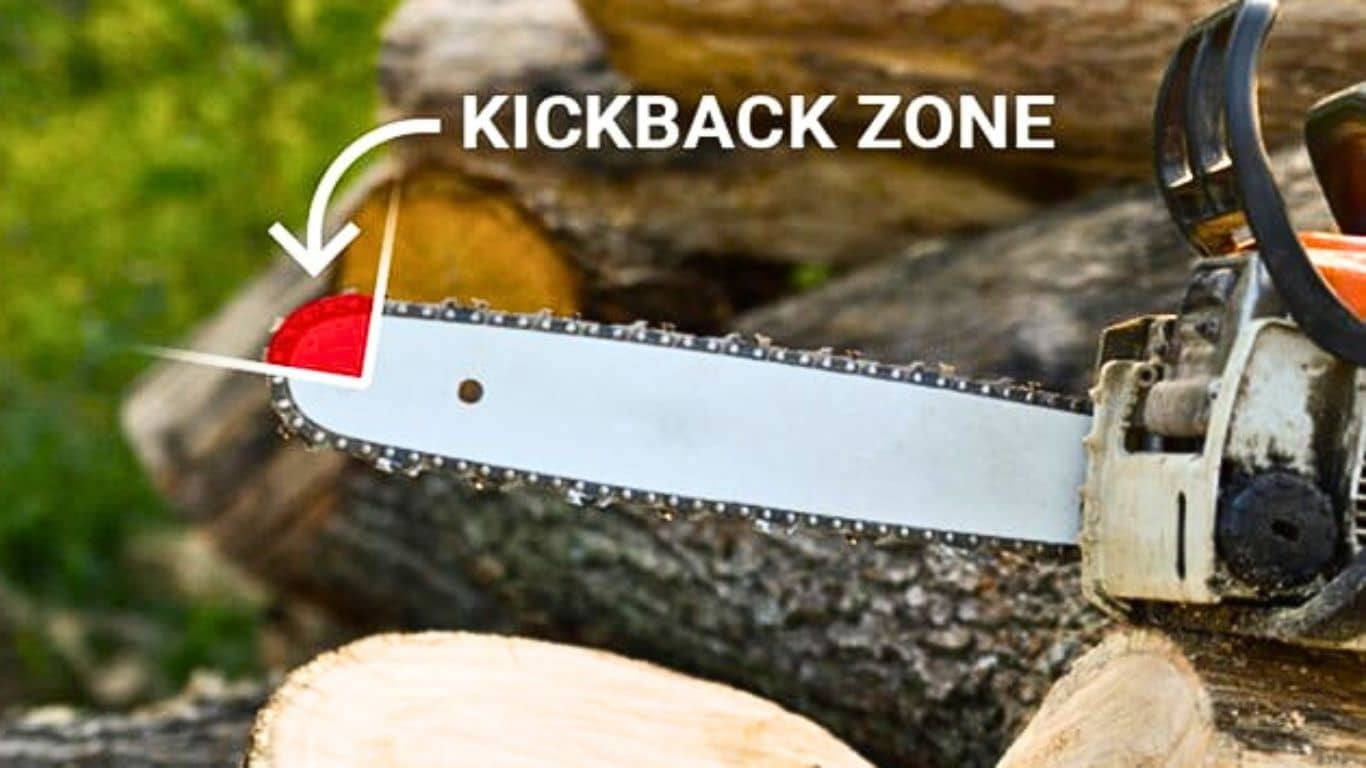
User Error
User error refers to accidents or incidents that happen due to the improper handling or operation of a chainsaw by the person using it. Inadequate training and lack of experience can lead to incorrect techniques, such as applying too much pressure on the blade or using the tip of the chainsaw for cutting. These mistakes can significantly increase the risk of accidents and injuries.
Mechanical Failure
Chainsaws, like any mechanical device, can experience mechanical failures. This could include a broken chain or tangled chain, malfunctioning throttle, or other issues with the engine or components of the chainsaw. Sometimes users face the tangling of chainsaws which becomes the cause of many accidents, read our article on how to unstuck chainsaw chains to avoid any serious accidents. Mechanical failures can lead to unexpected and dangerous situations during chainsaw operations.
Fatigue and Distractions
Chainsaw operation demands full attention and physical strength. Fatigue from extended use or other factors can compromise the user’s ability to control the chainsaw safely. Distractions, even briefly, can also lead to accidents, as using a chainsaw requires constant focus and concentration.
Weather and Environment
Weather conditions and the environment in which a chainsaw is being used can impact safety. Rain or snow can create slippery surfaces, making chainsaw operations riskier. Reduced visibility due to weather conditions can also increase the chances of accidents. Additionally, the presence of obstacles like rocks or hidden branches in the work area can heighten the dangers associated with chainsaw use.
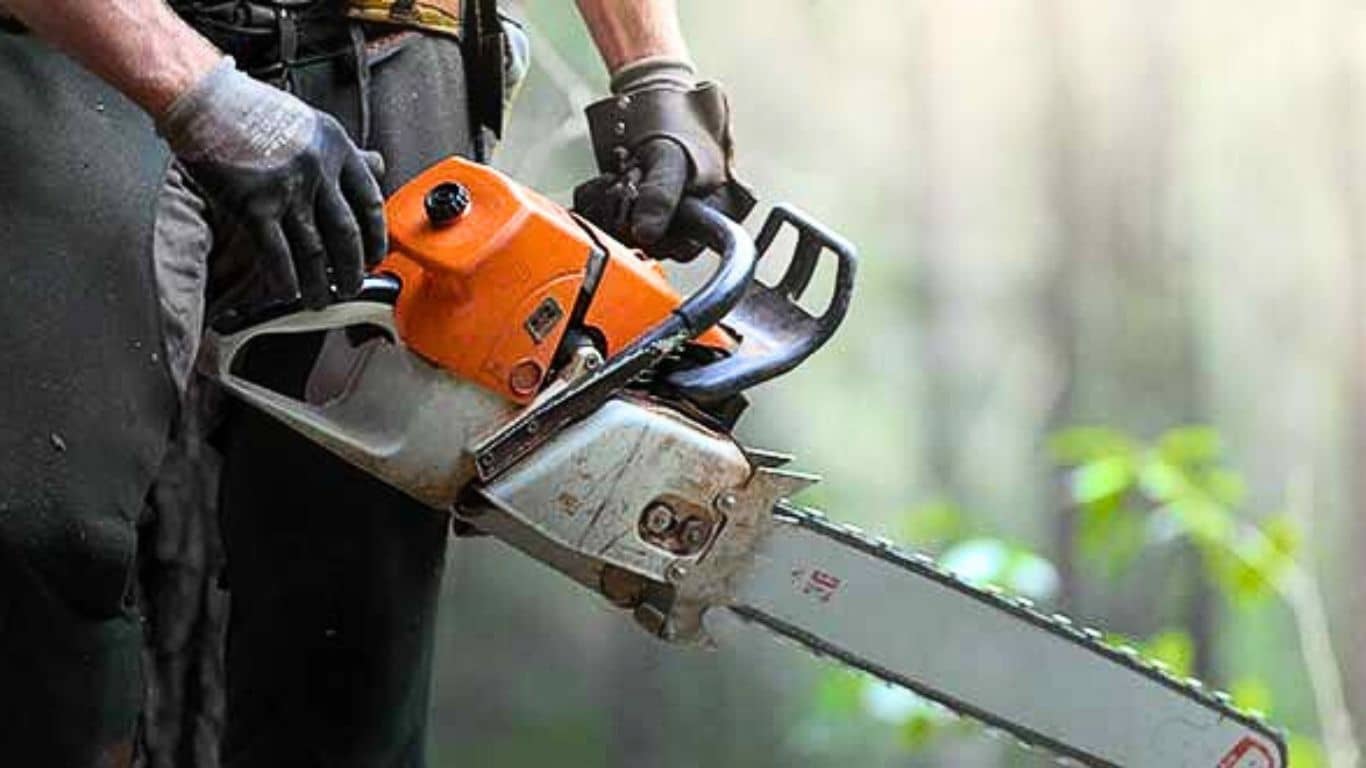
These various factors contribute to the potential dangers of using chainsaws. They emphasize the importance of proper training, following safety protocols, and taking necessary precautions to minimize risks and ensure safe operation. Chainsaws are powerful tools, and understanding these causes and safety measures is essential for anyone operating them. If you are a beginner, read our post on chainsaw tips for beginners, I am sure it will help you a lot!
Safety Measures to Avoid Dangers of Chainsaws
Here are some safety measures that you must have to take to avoid any serious dangers:
Training and Certification
Undergoing comprehensive training and obtaining proper certification is essential before using a chainsaw. Recognized chainsaw training courses teach users essential skills, safety protocols, and correct operation techniques. Proper training ensures that individuals are equipped with the knowledge and confidence to handle a chainsaw safely.
Personal Protective Equipment (PPE)
Personal Protective Equipment is crucial for protecting the user from potential injuries while operating a chainsaw. The following PPE should be worn:
- Helmet with a Face Shield or Safety Goggles: Protects the eyes and face from flying debris and wood chips.
- Heavy-Duty Gloves: Shields the hands from cuts, scratches, and potential contact with the chain.
- Chainsaw Chaps or Pants: Provides critical leg protection against accidental contact with the chain. We have a list of the best chainsaw chaps that you can buy for your safety.
- Sturdy Boots with Steel Toe Caps: Offers protection to the feet from falling objects or accidental chainsaw contact.
Maintaining the Chainsaw
Regular maintenance of the chainsaw is essential to ensure safe operation. Proper maintenance includes:
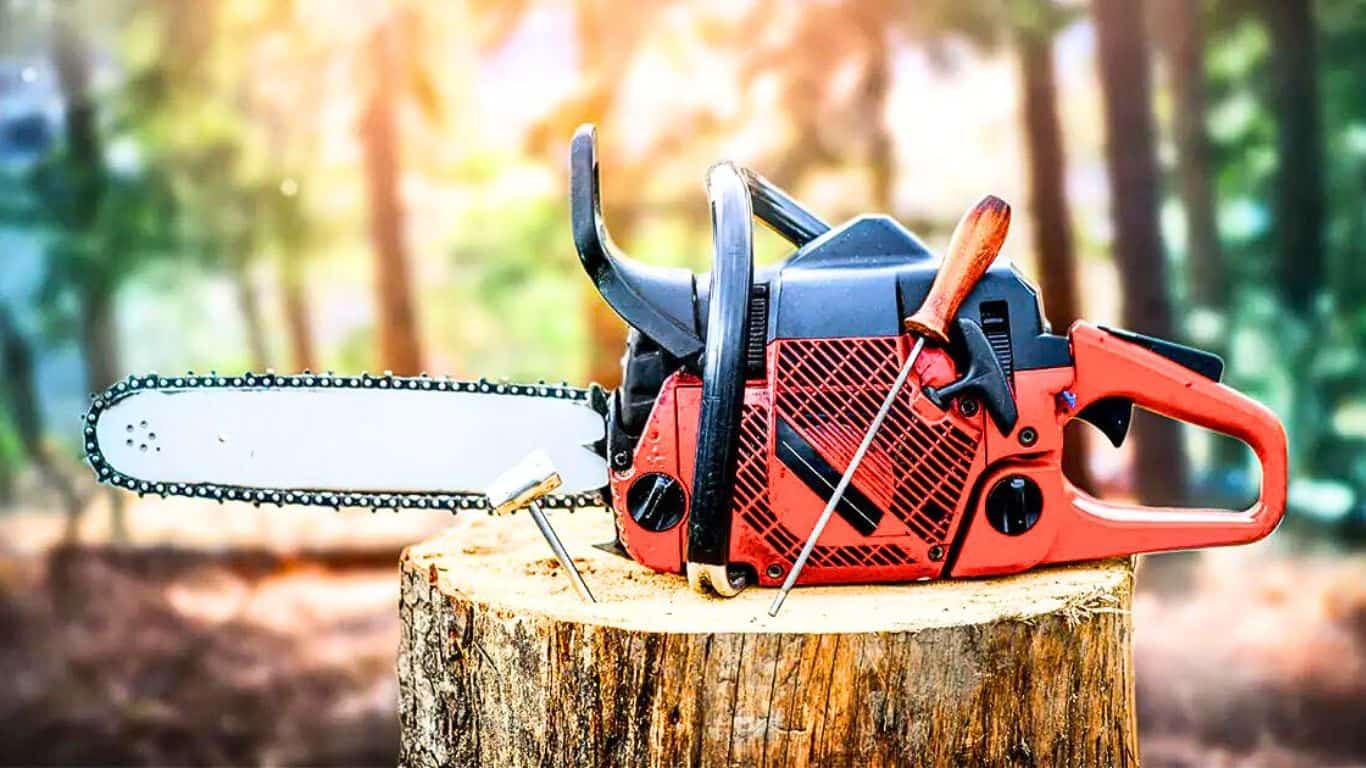
- Chain Tension: Keeping the chain properly tensioned to prevent it from slipping or coming off the guide bar during operation.
- Sharp Chain: Ensuring that the chain is sharp for efficient cutting and reduced kickback risk.
- Lubrication: Properly lubricating the chain and guide bar to minimize friction and ensure smooth operation.
- Inspecting the Chainsaw: Regularly inspect the chainsaw for any signs of wear, damage, or mechanical issues that might compromise safety.
Safe Handling Techniques
Adopting safe handling techniques is crucial for reducing the risk of accidents. This includes:
- Firm Grip and Stance: Holding the chainsaw with a firm grip and maintaining a stable stance during operation.
- Using Both Hands: Always use both hands to operate the chainsaw, with one on the handle and the other on the front handlebar, to maintain control.
- Avoiding the Kickback Zone: Being aware of the kickback zone, typically the top half of the guide bar, and avoiding contact with it.
- Proper Cutting Techniques: Using correct cutting techniques and avoiding forceful actions that could lead to kickback.
Bystander Safety
Chainsaw users should always be aware of their surroundings and keep bystanders at a safe distance. Ensuring that no one is within the vicinity of the chainsaw’s operation reduces the risk of accidental injuries to others.
By following these safety measures, chainsaw users can significantly reduce the risks associated with chainsaw operation and ensure a safer and more controlled cutting experience. Safety should always be the top priority when handling such powerful tools.
Clear the Work Area
Before starting the chainsaw, it is crucial to clear the work area of any potential obstacles, such as rocks, branches, or debris. This precautionary measure reduces the risk of kickbacks and other accidents caused by hitting unexpected objects during cutting.
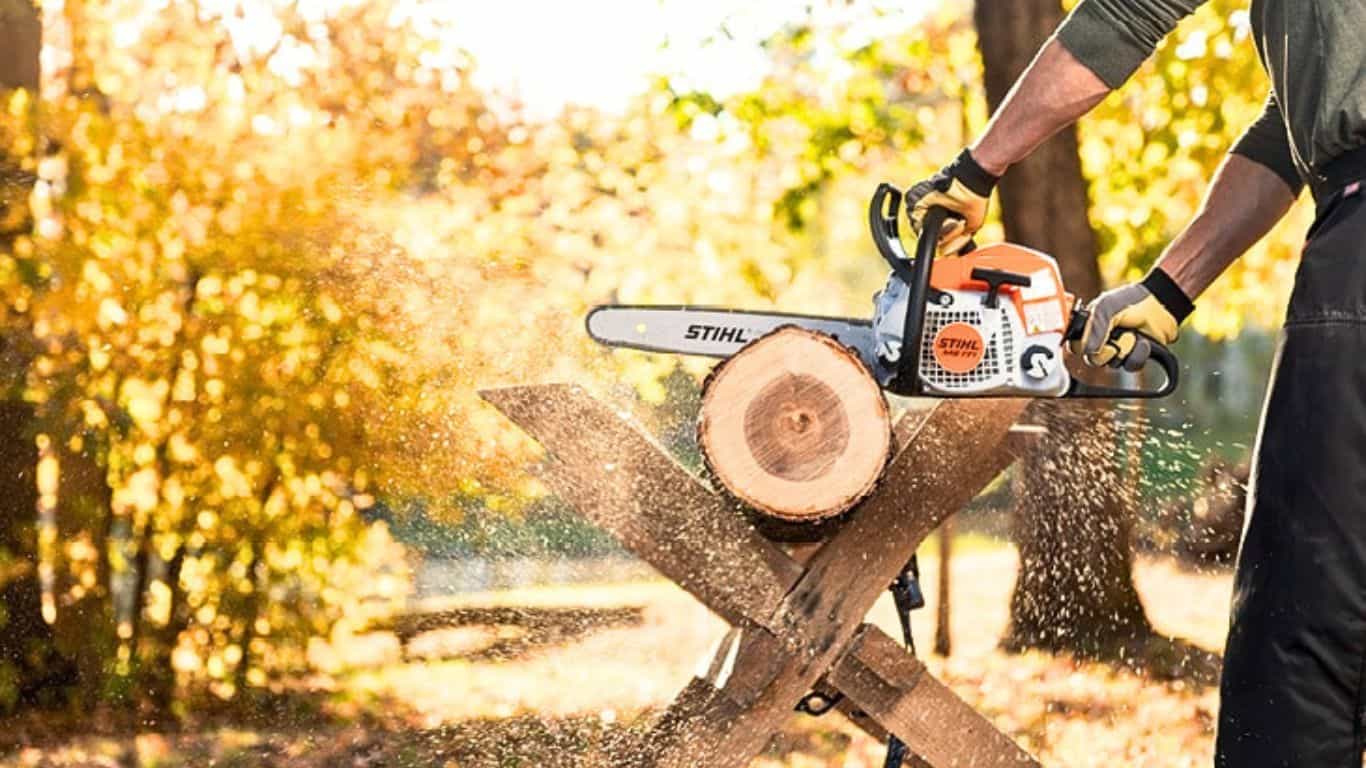
Safety Equipment that Must be Used
Safety equipment is crucial for chainsaw users to protect themselves from potential injuries while operating the tool. Here is a list of essential safety equipment that a chainsaw user needs:
Helmet with Face Shield or Safety Goggles
A helmet with an attached face shield or safety goggles is essential to protect the eyes and face from flying debris, wood chips, and sawdust that can be generated during chainsaw operation.
Heavy-Duty Gloves
Sturdy and durable gloves are essential to protect the hands from cuts, scratches, and potential contact with the chain or sharp objects. We have a list of the 10 best Chainsaw Gloves to purchase for your safety, have a look at them:
Chainsaw Chaps or Pants
Chainsaw chaps or pants are specifically designed to provide critical leg protection. They have multiple layers of cut-resistant material that can slow down or stop the chainsaw chain in the event of accidental contact, reducing the severity of injuries.

Sturdy Boots with Steel Toe Caps
Chainsaw users should wear boots with steel toe caps to protect their feet from falling objects, accidental chainsaw contact, or injuries while navigating rough terrain.
Hearing Protection
Operating a chainsaw can produce a loud noise, which can be damaging to the ears over time. Hearing protection, such as earplugs or earmuffs, should be worn to safeguard against noise-induced hearing loss.
Protective Clothing
Chainsaw users should wear appropriate, close-fitting clothing that covers their arms and legs. Avoid loose clothing that could get caught in the chainsaw.
First Aid Kit
A first aid kit should be readily available in case of minor injuries. It should include items such as bandages, antiseptic wipes, adhesive tape, and other basic medical supplies.
Safety Helmet
In addition to the face shield or goggles, a safety helmet with adjustable straps and cushioning provides extra protection for the head in case of accidental falls or impacts.

Communication Device
If working in a remote area, it is advisable to have a communication device, such as a mobile phone or two-way radio, to call for help in case of emergencies.
Are Chainsaws Dangerous – FAQs
To Wrap Up
In conclusion, chainsaws undoubtedly possess immense power and utility, but they also demand respect and vigilance. Understanding the potential causes of chainsaw accidents and adopting essential safety measures can safeguard users and spectators alike. Chainsaws need not be feared, but their operation requires knowledge, skill, and an unwavering commitment to safety. By embracing these safety practices, we can harness the power of these mechanical beasts responsibly and continue to shape our world with precision and care.
